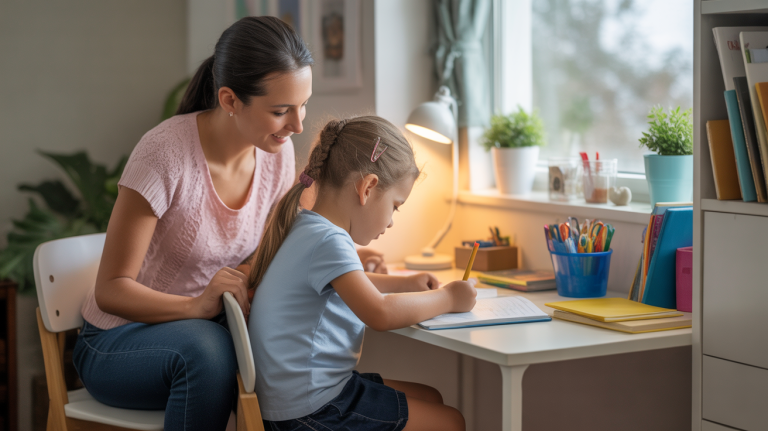42 Effective Classroom Attention Getters to Capture Attention
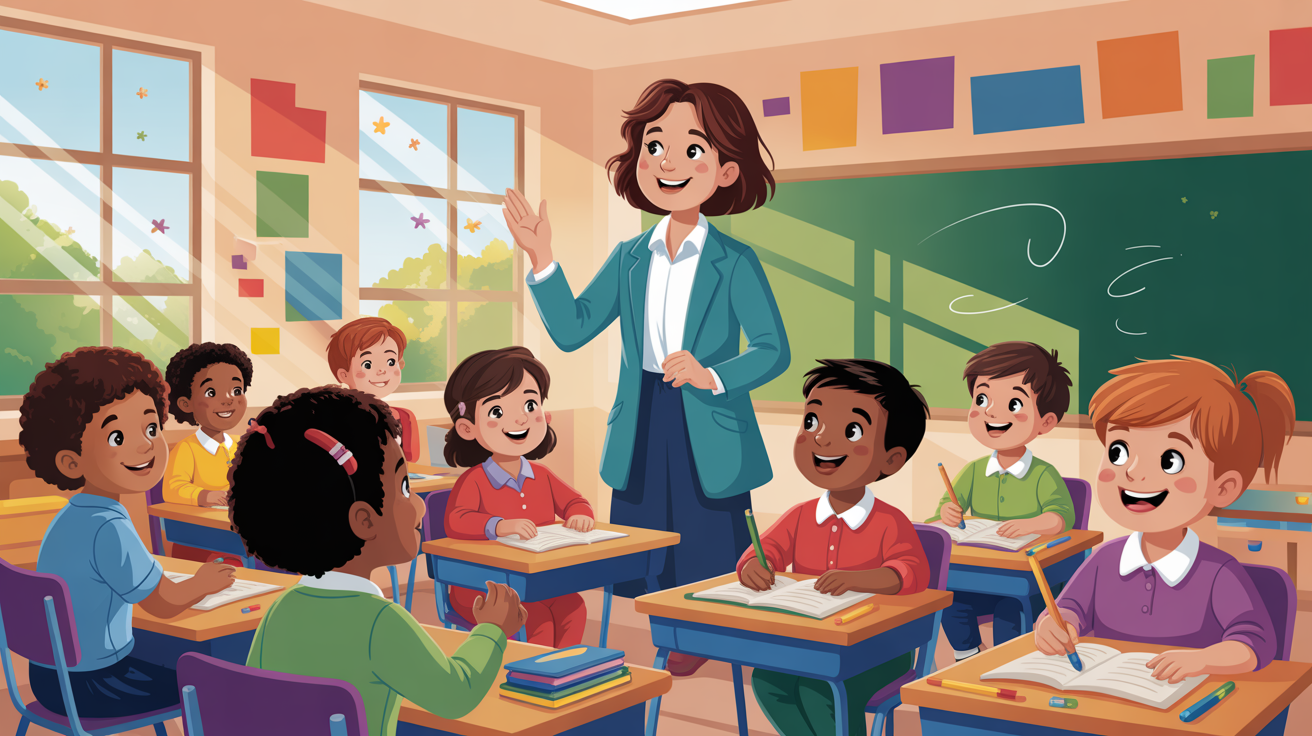
When you’re teaching an important lesson, and suddenly half your class starts chatting about weekend plans, does that sound familiar?
Every teacher knows the challenge of keeping students focused and engaged throughout the day. Attention getters are your secret tools for bringing wandering minds back to learning.
These simple techniques work like magic to refocus distracted students and create smooth transitions between activities.
The best part is that they take just seconds to use but make a huge difference in your classroom atmosphere.
When students know what to expect, they feel more secure and ready to learn. These techniques also add fun energy to your day while keeping you in control of the classroom flow.
What are Classroom Attention Getters?
Attention getters are quick signals that prompt students to pause their activities and focus on you. They work by giving everyone a clear, consistent way to pause and refocus their attention on the teacher.
Think of them as reset buttons for your classroom. Instead of raising your voice or waiting for quiet, you use a specific signal that students recognize instantly.
This creates a calm, respectful way to regain focus without disrupting the positive learning environment.
The key is establishing clear expectations and practicing these signals until they become automatic classroom routines.
When used consistently, attention getters change chaotic moments into smooth transitions that keep learning on track.
Why Use Attention Getters in the Classroom?
Attention getters make classroom management easier by preventing small disruptions from escalating into big problems.
When students know the signal, they respond automatically without you having to repeat yourself multiple times.
These techniques also build a sense of community in your classroom. Everyone participates together, which creates a connection and shared responsibility for maintaining focus. Students actually enjoy the predictable routines that help them feel safe and included.
The most significant benefit is how they preserve your teaching energy. Instead of fighting for attention, you spend more time teaching and building relationships with your students.
How to Choose the Right Attention Getter
Picking the perfect attention getter isn’t just about what sounds fun or interesting to you. The most effective techniques match your specific students, classroom setup, and the energy level you need at different times of day.
1. Match Your Students and Setting
Consider your students’ ages and personalities when selecting attention-getting strategies. Younger kids love silly sounds and movements, while older students prefer more mature signals that don’t make them feel childish.
Your classroom setup matters too. Large rooms might need louder signals or visual cues, while small spaces work well with quiet hand signals or whispered responses.
2. Rotate and Refresh Your Approach
Keep several attention-getters in your toolkit and switch between them regularly. This prevents students from getting bored or tuning out the same signal repeatedly.
Pay attention to which ones work best with your group. Some classes respond better to musical cues, while others respond better to movement-based signals. Adjust based on what gets the best response from your specific students.
3. Know Your Audience
Age makes a huge difference in question selection. Kids love silly scenarios and make-believe situations, while adults might prefer practical choices or nostalgic references from their generation.
Cultural backgrounds also play a role in selecting questions. What seems normal to one group might be confusing or inappropriate to another. Keep your audience’s values and experiences in mind.
Call-and-Response Attention Getters
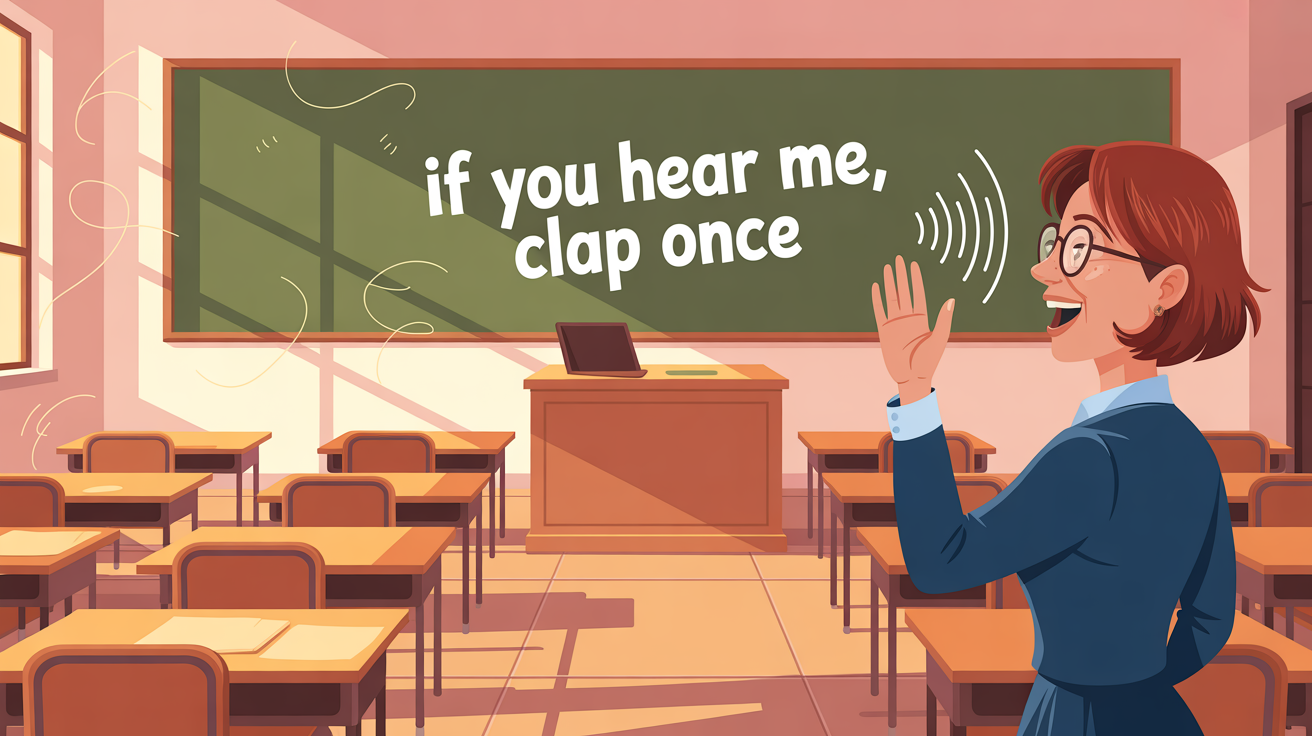
These classic techniques use your voice and student responses to create instant focus. They work because students have to listen carefully to know when and how to respond.
The rhythm and predictability of call-and-response help students feel confident participating. Everyone can join in regardless of their academic level or personality type.
1. If You Hear Me, Clap Once
Say, “If you hear me, clap once,” and students clap once in response. Continue with “If you hear me, clap twice” until everyone is focused and participating.
This technique works especially well with younger students who love following simple commands. The repeated pattern helps ensure that even distracted students eventually join in and focus.
2. Ready to Rock, Ready to Roll
Call out “Ready to rock,” and students respond “Ready to roll” with enthusiasm. This energetic response gets everyone engaged and ready for the next activity.
Use this before high-energy lessons or when students need a motivation boost. The rhyming pattern makes it memorable and fun for students of all ages.
3. Hocus Pocus
Say “Hocus Pocus,” and students respond “Everybody Focus” while pointing to their eyes. This magical phrase creates a fun way to direct attention back to the teacher.
The pointing gesture reinforces the visual focus element of paying attention. Students enjoy the theatrical element, which makes focusing feel like playing a game.
4. Class, Class – Yes, Yes
Simply say “Class, class” in a specific tone, and students echo back “Yes, yes” in the same tone. Change your voice pitch or volume to keep this simple technique fresh and engaging.
Students enjoy matching your tone, which helps them practice listening skills while focusing. This versatile technique works for any age group and can be adapted for different moods.
5. Crisscross Applesauce
Use this classic phrase to get students to sit properly and pay attention. Students automatically cross their legs and put their hands in their laps when they hear this familiar call.
Perfect for carpet time or when you need students in a calm, ready-to-learn position. This traditional signal helps create structure and readiness for listening activities.
6. All Set, You Bet
Call “All set,” and students enthusiastically respond “You bet” while giving thumbs up. This positive response creates excitement and confirms everyone is ready to continue.
The thumbs up provides visual confirmation that all students are engaged and ready. This upbeat signal works well when transitioning to fun or challenging activities.
7. Watermelon, Watermelon
Say “Watermelon, watermelon,” and students respond “Squish, squash” while making squishing motions with their hands. This silly phrase gets giggles while effectively capturing attention through both sound and movement.
The unexpected word choice makes students smile and creates positive associations with focusing time. Young students especially love the playful nature of this attention getter.
Clapping Patterns & Rhythms
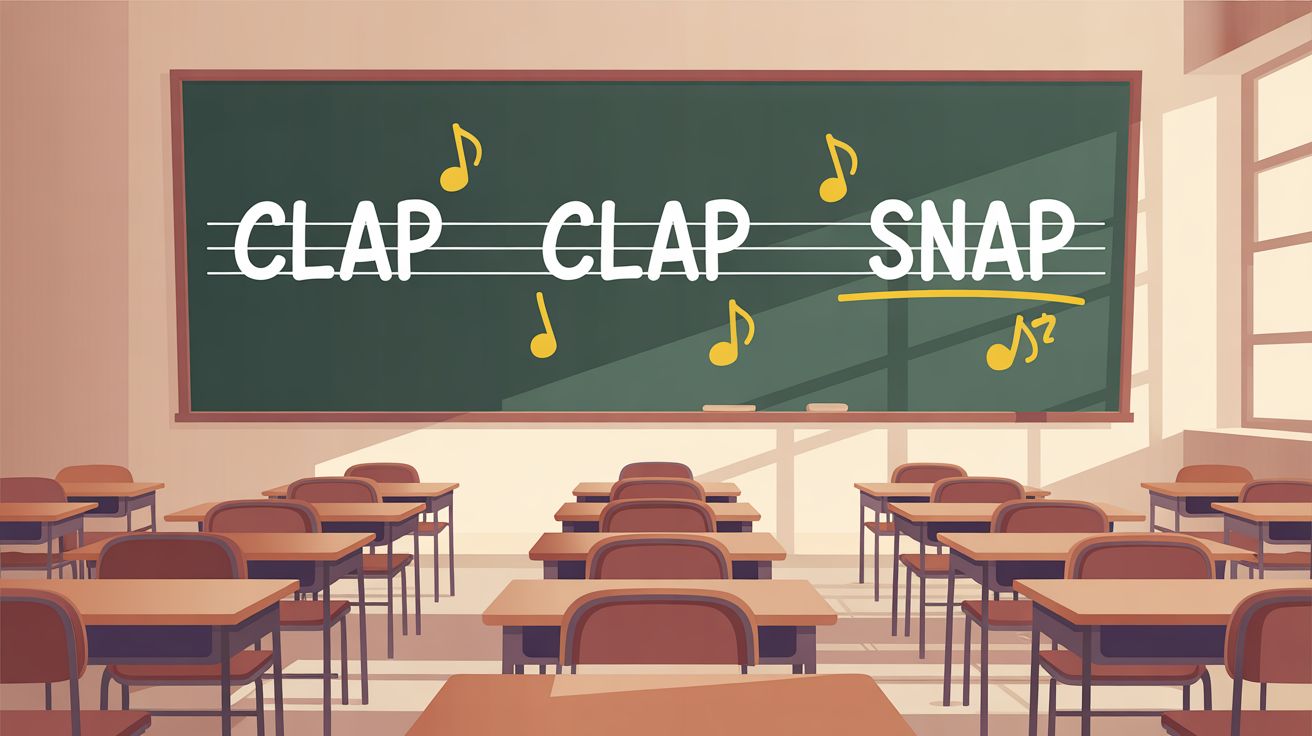
Rhythm-based attention getters tap into the natural human love of patterns and music. Students enjoy the challenge of listening carefully and responding with the correct pattern.
These work especially well because they engage both auditory and physical participation. The act of clapping or snapping helps release energy while focusing attention at the same time.
8. Clap, Clap, Snap
Start with two quick claps followed by a snap, and students repeat the exact pattern back. This simple rhythm is easy to remember but engaging enough to capture wandering attention.
Works great as a transition signal between different subjects or activities. The combination of sounds keeps students alert and ready to participate.
9. Thunder Clap Pattern
Begin with slow, quiet claps that gradually get louder and faster like approaching thunder. Students join in and follow your lead until you suddenly stop for complete silence.
This technique builds anticipation and naturally leads to focused quiet time. The dramatic buildup creates excitement that changes into focused attention.
10. Stomp, Stomp, Clap
Use your feet and hands to create this energetic pattern that students copy back. The combination of stomping and clapping engages the whole body and releases physical energy.
Especially effective with active students who need movement to help them focus. This technique works well after lunch or during afternoon energy dips.
11. Snap, Crackle, Pop
Create three distinct sounds – a finger snap, tongue click, and hand pop. Students love mimicking this cereal-inspired pattern that’s both fun and challenging to master.
The variety of sounds keeps students engaged and helps develop listening discrimination skills. This playful approach makes attention-getting feel like an enjoyable challenge rather than a demand.
12. Rhythm Echo Challenge
Clap out different rhythmic patterns and have students echo them back perfectly. Start simple and gradually increase complexity to keep students engaged and listening carefully.
This technique also helps develop musical skills and pattern recognition abilities. Students enjoy the challenge and feel accomplished when they master more difficult patterns.
13. Beat Box Attention
Use simple mouth sounds to create beats that students can easily copy back. This modern twist on rhythm patterns appeals to students who love music and sound effects.
Encourages creativity while maintaining the structure needed for effective attention getting. Students often request their favorite beat patterns, making this technique highly engaging.
14. Pattern Power Clap
Create a more complex pattern using claps, snaps, and knee pats that students repeat. Start with a simple version and gradually add complexity as students master each level.
This technique challenges students mentally while providing physical engagement and builds listening skills. Advanced students can help create new patterns for the class to try.
Visual & Nonverbal Signals
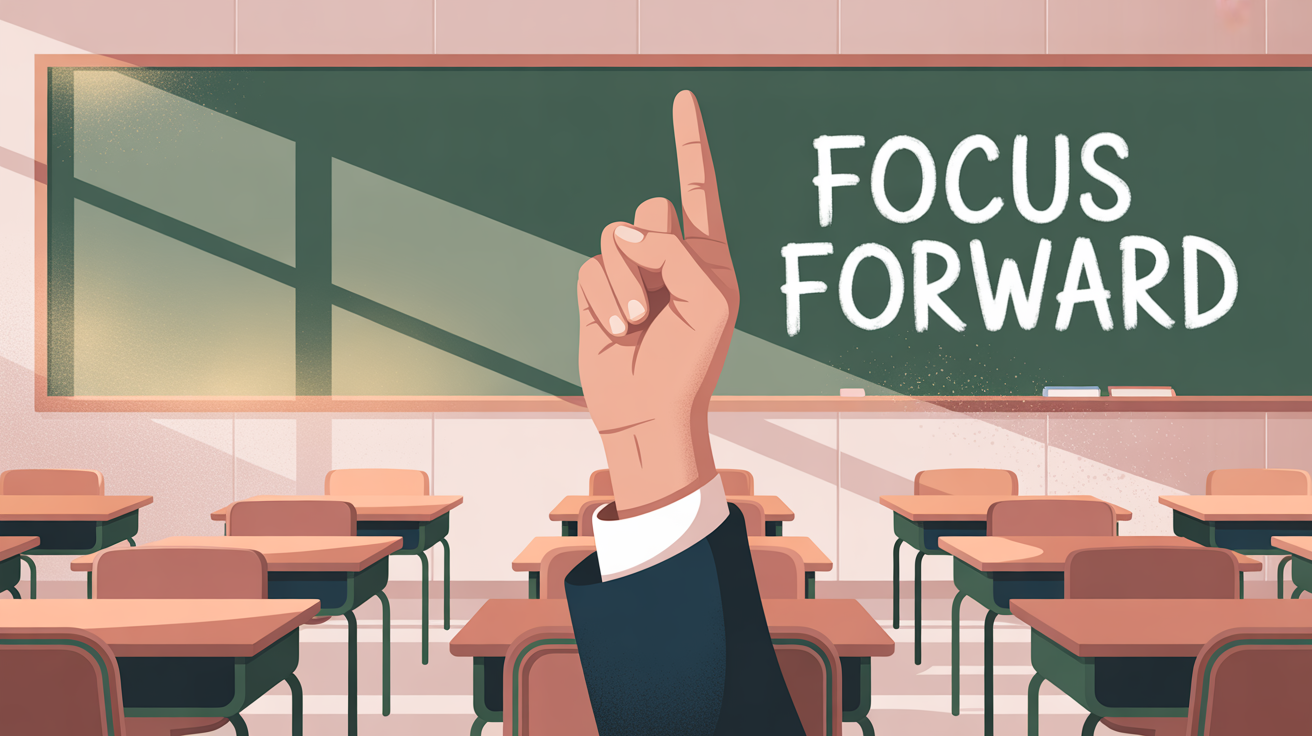
Silent signals are perfect for times when you need quiet attention without adding more noise to the classroom. They also work great for students who learn better through visual cues than auditory ones.
These techniques help create calm, peaceful transitions that don’t overstimulate already excited or anxious students. They’re also helpful when you need to get attention without interrupting a student who’s speaking.
15. Raise Your Hand High
Simply raise your hand high in the air, and students copy the action while becoming quiet. This universal signal works across all ages and creates immediate visual focus on you.
Students naturally look around and remind each other to raise their hands when they see others participating. The peer encouragement makes this technique self-reinforcing and highly effective.
16. Peace Sign Signal
Hold up two fingers in a peace sign, and students respond by showing theirs back silently. This calm gesture creates a peaceful atmosphere while signaling it’s time to focus.
The positive association with peace helps maintain a respectful classroom environment. Students often smile when they see this signal, creating positive feelings about focusing time.
17. Lights Off and On
Flick the lights off and on once or twice to get immediate attention. Students automatically look toward the light switch and then at you for the next instruction.
This technique works especially well in larger classrooms where voice signals might not reach everyone. The sudden change in lighting naturally draws all eyes to you instantly.
18. Silent Countdown
Hold up five fingers and slowly count down to zero without speaking. Students watch intently as each finger goes down, creating suspense and complete focus by zero.
This technique builds anticipation and gives students time to finish their current thoughts or tasks. The visual countdown helps students prepare mentally for the transition ahead.
19. Attention Poster
Point to a colorful poster with attention-getting words or pictures on it. Students see your gesture and automatically focus on the visual cue before looking back at you.
Change the poster regularly to maintain interest and reinforce different classroom expectations. This technique works well for reinforcing classroom rules or behavior expectations.
20. Magic Teacher Stare
Stand quietly and make eye contact with students until they notice and become silent. This technique works through positive peer pressure as students nudge others to pay attention.
Effective for building strong teacher-student relationships through respectful eye contact and connection. Students feel seen and valued when you make individual eye contact with them.
21. Attention Thumbs Up
Hold up both thumbs, and students respond by showing their thumbs up back to you. Once everyone has thumbs up, they know to put them down and focus completely.
This positive gesture creates an upbeat atmosphere while providing clear visual confirmation of readiness. The thumbs-up signal naturally makes students feel good about participating and focusing.
Musical & Audio Cues
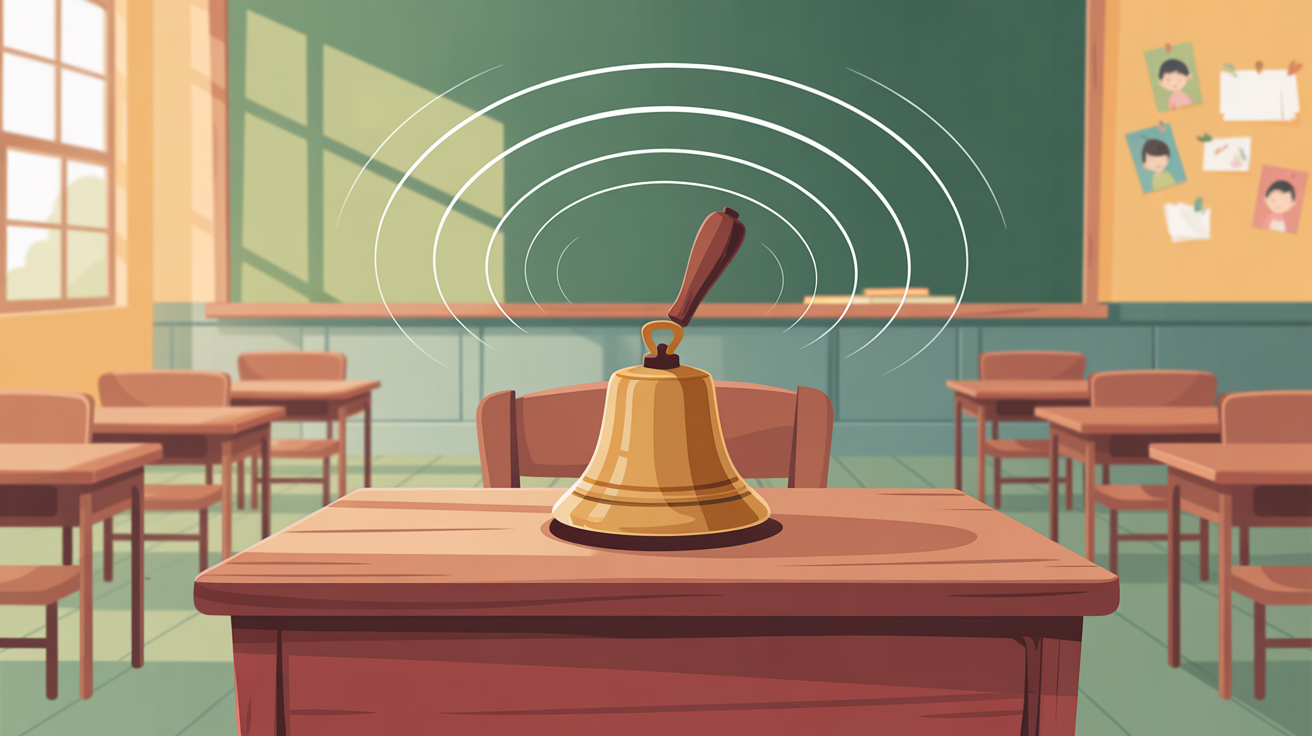
Music and sound effects add joy and energy to classroom transitions. Students often remember musical cues better than spoken directions, making these signals very effective.
These attention getters work well for creating specific moods, too. Calm music can settle an energetic class, while upbeat sounds can energize a sleepy afternoon group.
22. Chime or Bell Ring
Ring a small bell or chime, and students know to stop talking immediately. The pleasant sound is less jarring than shouting and creates a calm signal for attention.
Choose different tones for different purposes – soft chimes for quiet work, louder bells for transition times. The gentle musical quality helps maintain a peaceful learning environment throughout the day.
23. Classical Music Fade
Play soft classical music during work time, then gradually fade it out completely. Students learn that silence means it’s time to stop working and look at the teacher.
This technique helps students develop internal awareness of time and transitions without abrupt interruptions. The gradual fade gives students time to finish their current thought or sentence naturally.
24. Rain Stick Sound
Shake a rain stick to create the soothing sound of falling rain. Students are naturally drawn to this calming sound and automatically quiet down to listen better.
The gentle, natural sound helps create a peaceful learning environment and reduces classroom stress. This technique works especially well after high-energy activities or during tense moments.
25. Whistle Tweet
Use a small referee whistle to give one or two short tweets. Students respond immediately to this clear, attention-getting sound that cuts through classroom noise.
Keep the whistle use brief and consistent to maintain effectiveness without becoming annoying. The sharp, distinct sound ensures even the most distracted students will notice and respond.
26. Piano Chord
Play a single chord on the piano or keyboard to signal transition time. The musical sound is pleasant but distinct enough to capture attention without being harsh or startling.
Different chords can signal different activities – high notes for cleanup, low notes for quiet time. Students begin to associate specific chords with particular classroom routines and transitions.
27. Nature Sounds
Play brief nature sounds like birds chirping or ocean waves from your phone. Students become curious about the unexpected sounds and naturally focus on you for an explanation.
These sounds can also help create thematic connections to science lessons or seasonal activities. The novelty of different natural sounds keeps students interested and responsive.
28. Singing Bowl
Ring a small singing bowl and let the sound fade completely to silence. Students learn to listen for the exact moment the sound disappears before focusing on you.
This mindful technique promotes listening skills and creates a calm, centered atmosphere for learning. The meditative quality helps students transition from active to focused states naturally.
Movement-Based Attention Getters
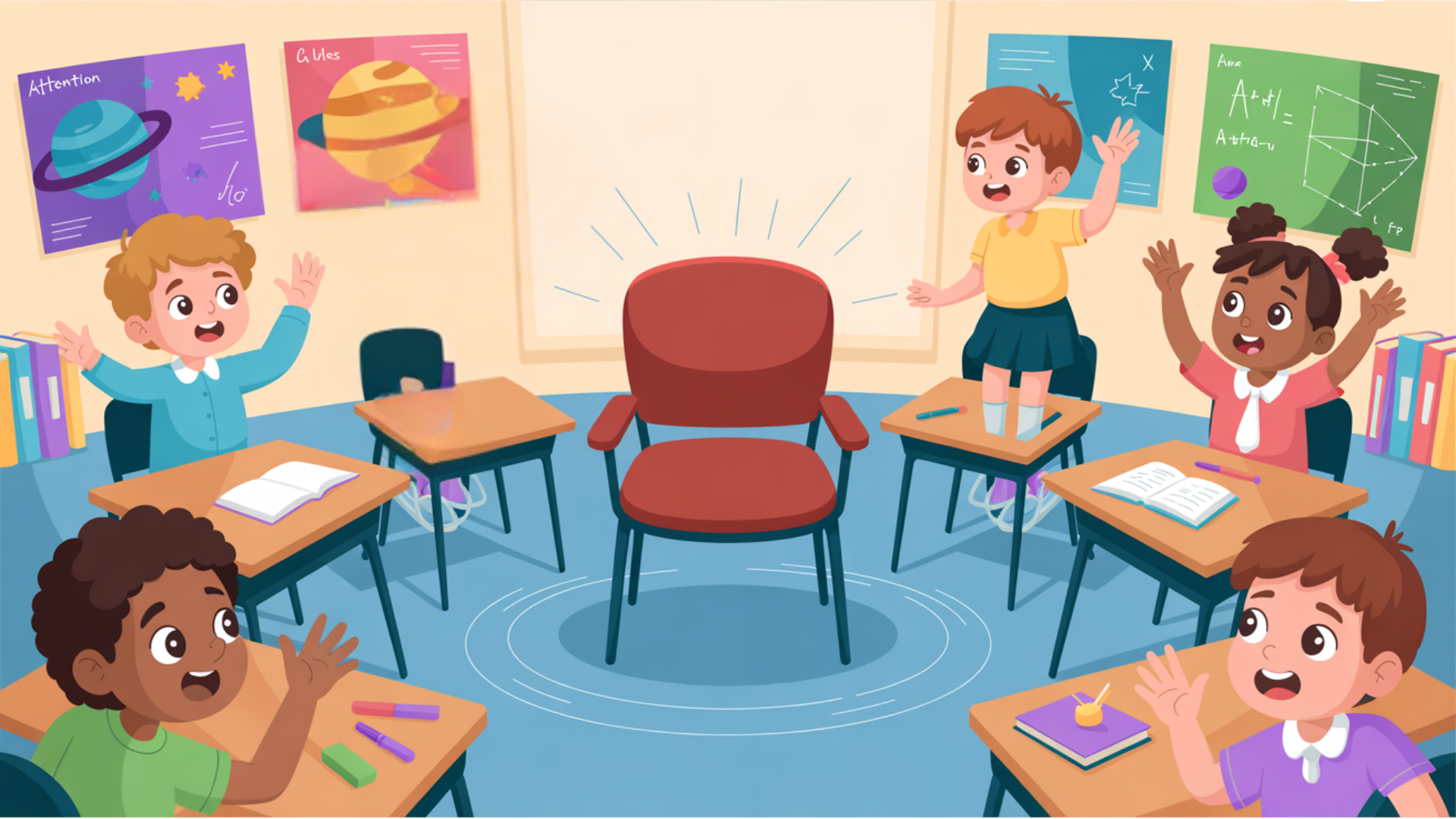
Physical movement helps students release energy while refocusing their minds on learning. These techniques are especially helpful after long periods of sitting or during high-energy times of day.
Movement-based signals also support different learning styles and help students who need physical activity to focus better. They turn potential restlessness into positive, directed energy.
29. Freeze Dance
Play music briefly and let students move, then stop the music for instant freezing. Students love this game format and quickly learn to stop all movement when the music ends.
This technique combines fun with self-control practice and works well for brain breaks. The sudden stillness after movement naturally creates focused attention and readiness to listen.
30. Touch Your Nose
Call out body parts for students to touch quickly and quietly. End with “touch your lips” so students naturally become silent while maintaining physical engagement.
This technique helps students practice following directions while providing gentle physical activity. The sequence keeps students alert and engaged while naturally leading to quiet focus time.
31. Stand Up, Sit Down
Have students stand up, then sit down in unison as an attention reset. This simple movement helps refocus energy and creates a clear transition between activities.
The physical change in position naturally shifts mental focus and prepares students for new learning. This technique works especially well when students have been sitting for extended periods.
32. Wiggle and Stop
Let students wiggle everything for five seconds, then call “STOP” for complete stillness. This technique releases built-up energy before requiring focused attention and listening.
Perfect for times when students seem restless or have been sitting for extended periods. The contrast between movement and stillness makes the quiet time feel more achievable and natural.
33. Statue Game
Call out “Statue,” and students must freeze like statues in whatever position they’re in. This creates immediate stillness and focus while adding a playful element to attention-getting.
Encourage creative statue poses to keep students engaged and excited about participating. Students enjoy showing off their creative frozen poses while achieving the goal of stillness.
34. Simon Says Focus
Use the classic game format with attention-focusing commands like “Simon says hands on desk.” Students must listen carefully and follow only the properly given commands.
This familiar game format makes attention-getting feel like play while developing listening skills. Students enjoy the challenge of listening carefully and following directions precisely.
35. Stretch and Settle
Guide students through a quick 30-second stretch routine ending in a calm seated position. This combines movement with mindfulness as students reach up, roll their shoulders, and then settle quietly.
Perfect for releasing physical tension while preparing minds for focused learning time. The gentle movements help students transition from restless to ready states naturally.
Technology & Virtual Classroom Attention Getters
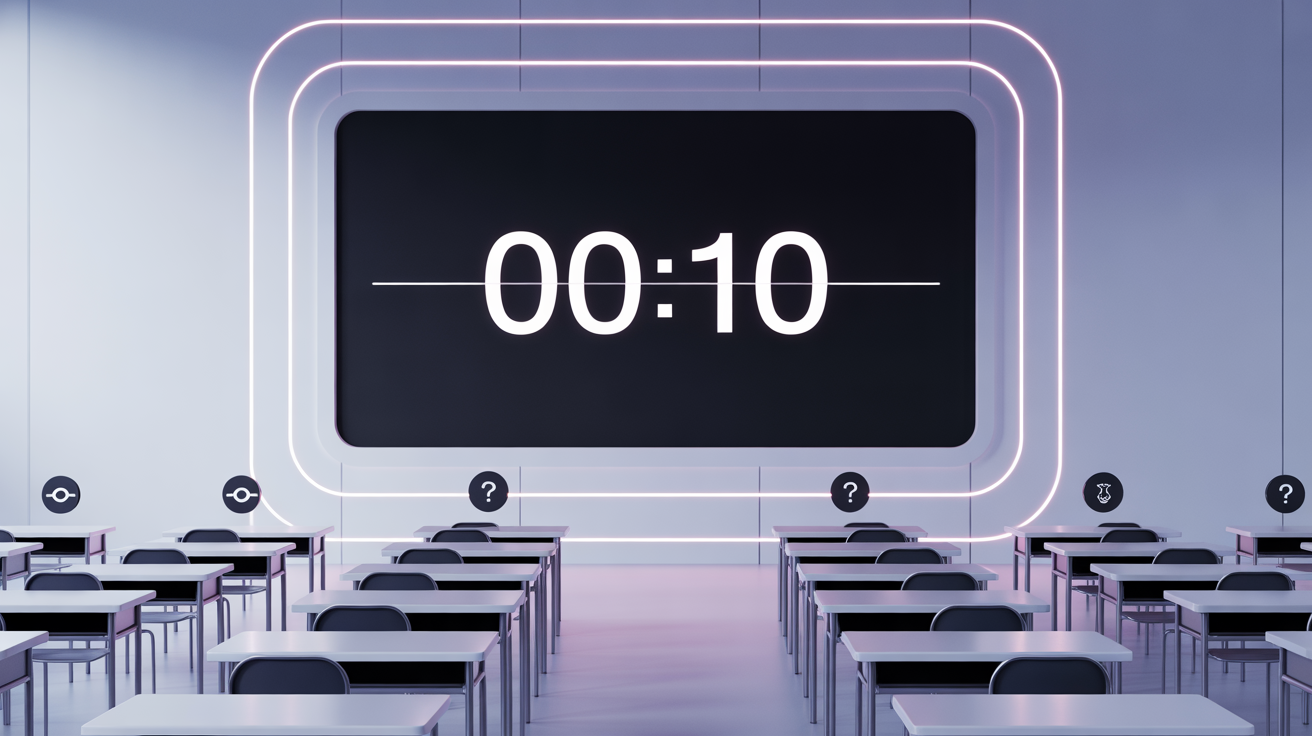
Digital tools offer new ways to capture attention, especially in online learning environments. These modern approaches appeal to tech-savvy students and work well in hybrid classroom settings.
Technology-based signals also provide consistency between in-person and virtual learning days. Students get familiar with routines regardless of where they’re learning.
36. Digital Timer Countdown
Display a large countdown timer on your screen or projector for all to see. Students watch the numbers decrease and automatically prepare to focus when they reach zero.
This visual cue helps students manage their own time and prepare mentally for transitions. The ticking countdown creates anticipation that naturally draws attention and builds focus.
37. Sound Effect Apps
Use phone apps to play attention-getting sounds like gongs, bells, or fun effects. The variety of available sounds keeps students interested and responsive to audio cues.
Rotate different sounds to maintain novelty while establishing consistent response expectations. Students enjoy trying to guess which sound will come next, keeping them alert and engaged.
38. Virtual Hand Raising
In online classes, ask students to use the virtual hand raise feature simultaneously. Seeing multiple hands pop up on screen creates visual unity and focused attention.
This technique also helps teachers quickly assess who is present and engaged in virtual learning. The shared visual creates a sense of community even in digital learning spaces.
39. Screen Color Change
Change your screen background to a bright, attention-getting color like red or yellow. Students immediately notice the visual change and look to you for the next instruction.
Use different colors to signal different types of activities or transitions throughout the day. The sudden visual shift naturally captures attention without requiring additional noise or verbal commands.
40. Online Poll Quick Check
Launch a simple poll asking “Are you ready to focus?” with yes/no options. Students must actively participate to respond, automatically engaging them in the attention-getting process.
This technique also provides quick feedback on student readiness and engagement levels. The interactive element makes students feel involved in the classroom management process.
41. Mute All Signal
In virtual classrooms, use the “mute all” function as your attention signal. Students see their microphones turn off and know it’s time to focus silently on instruction.
This creates immediate quiet and visual consistency across all participants in online learning environments. The sudden silence naturally draws attention to the teacher for the next instruction.
42. Virtual Background Change
Switch to a specific attention-getting virtual background that students recognize as the focus signal. Choose bright colors or fun patterns that immediately catch their eye on screen.
This technique works especially well for younger students who love visual surprises and helps maintain engagement in online learning. Different backgrounds can signal different types of activities or learning modes.
Tips for Success with Attention Getters
Getting the most out of attention getters requires more than just knowing the techniques. These practical tips will help you implement them effectively and maintain their power throughout the school year.
| Tip | Why It Works | How to Do It |
|---|---|---|
| Be Consistent | Students respond better when they know what to expect from familiar signals | Use the same attention getter for at least a week before switching to maintain effectiveness |
| Practice First | Students need time to learn the response before they can rely on the technique | Spend 5-10 minutes teaching and practicing new attention getters during calm moments |
| Keep It Simple | Complex signals confuse students and reduce response time | Choose attention getters with no more than 2-3 steps for quick, reliable results |
| Match the Mood | Different situations call for different energy levels in your signals | Use calm signals after recess, energetic ones during sleepy afternoon periods |
| Rotate Regularly | Variety prevents students from getting bored and tuning out repeated signals | Change attention getters every 2-3 weeks to maintain interest and effectiveness |
| Include Everyone | All students need to feel capable of participating successfully | Choose techniques that work for different abilities and learning styles in your classroom |
| Stay Patient | New attention getters take time to become automatic responses | Give students several chances to practice before expecting perfect, immediate responses |
Conclusion
Attention getters change chaotic classroom moments into smooth, manageable transitions.
They help you maintain focus without stress while creating a positive learning environment where everyone feels included and engaged.
Try different types to see what works best with your students and teaching style. Some teachers love musical cues while others prefer simple hand signals.
The right choice is whatever gets your students excited to participate and learn.
Remember to keep things fresh by rotating your attention getters throughout the year. What works in September might need updating by January, and that’s perfectly normal.
Which attention getter sounds most exciting to try with your class? Share your favorites in the comments and let other teachers know what works best for your students!

